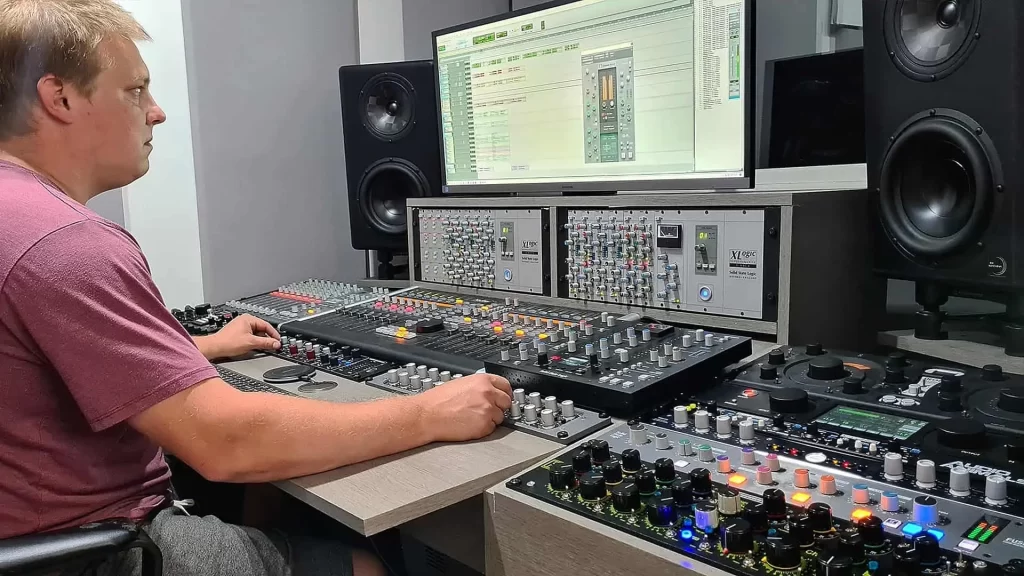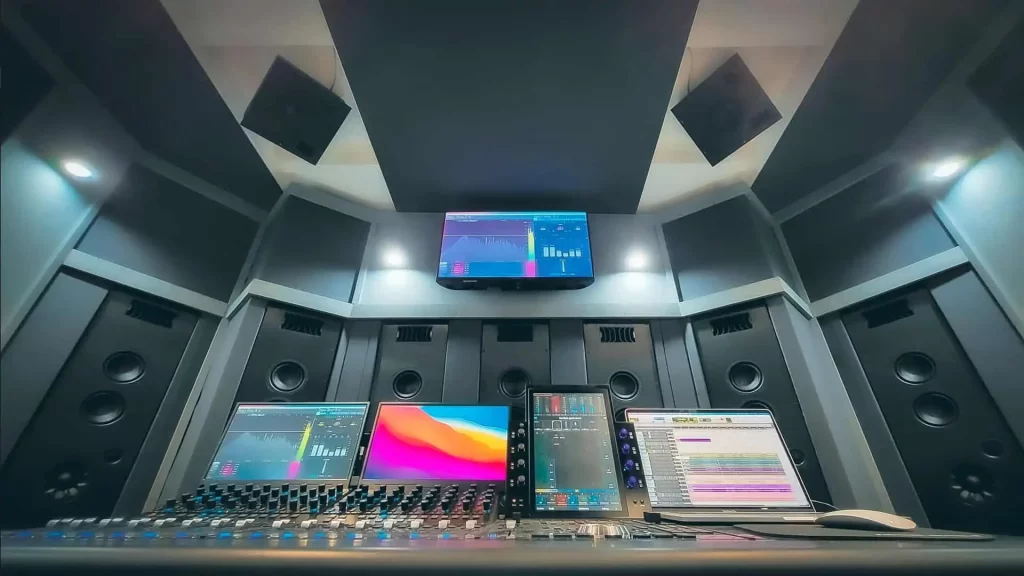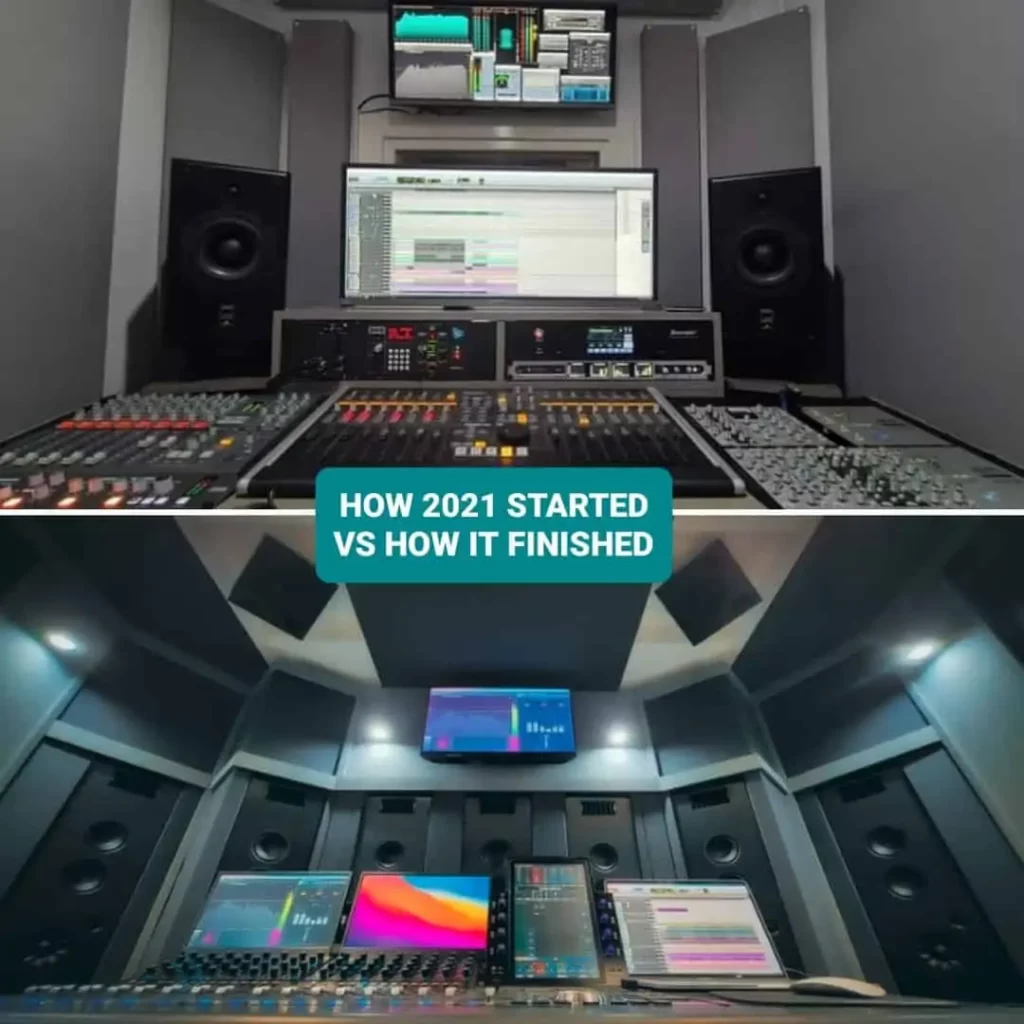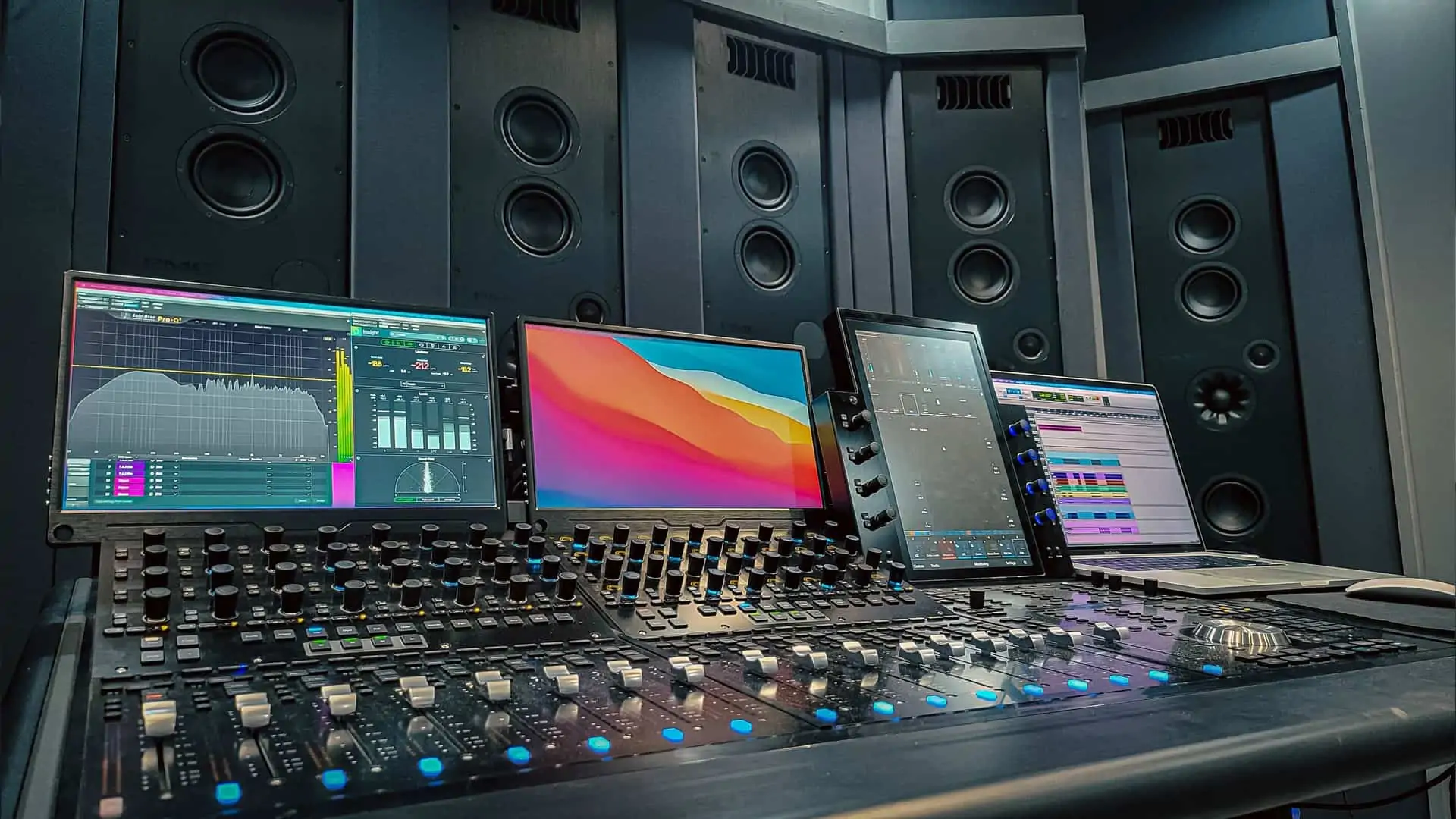To begin this article I wanted to first paint a picture for you and tell you the story of my experience of being a mixing engineer using a Solid State Logic console and then switching to a digital console working in Dolby Atmos.
It all started in the summer of 2021. I get a phone call from Dale at SX Pro saying we need to take you to PMC and show you their new Dolby Atmos room. Of course I said yes and we arranged a day to go down and speak with Heff and get a demo.
Now I will quickly add here at this point I had just completed and finished building my perfect modular Solid State Logic console. It was a beauty and had taken me 10 years to customise exactly as I wanted it. It was honestly perfect for my workflow. So for someone to tell me at this stage Dolby Atmos has arrived in a big way and you should really check it out did leave me a bit concerned of what to do with my SSL console I was getting such a great sound using.

So we went down to PMC and was quite simply blown away by Dolby Atmos. Everything about it was just on a different level to stereo. I left the PMC showroom feeling deflated and not looking forward to going back to my stereo setup. We sat down with Dale and spec’d the speaker setup the next day. Within a couple of months I had my Dolby Atmos studio built and ready to begin working in. The studio was very expensive but 100% worth it. The sound I could now achieve was so far superior to anything I could have possibly achieved in stereo.
So how much better is it?
Well today I was tasked with the job of mixing a song in Dolby Atmos that I had previously mixed in stereo on my stereo SSL console. I though OK this is going to be a great test. Let me see just how much difference there is. I used the exact same stems and similar processing. The main difference between the two mixes was that one was mixed stereo using analogue EQ’s and compressors and the other was mixed digitally in Dolby Atmos using plugins.

Well the difference was night and day. I had another engineer in the studio with who witnessed the test with fresh ears and no prior knowledge to which was analogue and which was Dolby Atmos. His words were “it’s night and day difference. It’s like one was mixed by my son and the other was mixed by the best engineer in the world.” Now it’s worth mentioning that the comparison was of two stereo files. One was analogue stereo directly printed from the SSL’s mix bus and the other was binaural simulation of Dolby Atmos in stereo. It wasn’t like one was full Dolby Atmos and the other was stereo. That’s an even bigger jump in superior sound.
The difference was honestly like comparing mono to stereo. The stereo mix sound lifeless in comparison. The funny thing is though is the analogue stereo mix sounds amazing and was signed off as complete. It sounded like anything you would hear from any top engineer. It wasn’t like the stereo mix was bad in any way, it was just that Dolby Atmos is different class to stereo.
When discussing the comparison we used the analogy of a fish in water. It jumps out the water and realises there’s a whole new world out there he never knew there was. The fish in the water is like stereo. We all know and love stereo and we didn’t know of anything better. The fish jumps out the water and realises there is more to this world, there is Dolby Atmos. It’s only once you realise the superior sound quality achieved in Dolby Atmos that you realise just how superior it is.
Having a reference point and flicking between stereo and Dolby Atmos binaural stereo reinforced that in fact stereo is so inferior to Dolby Atmos that I could never go back.


